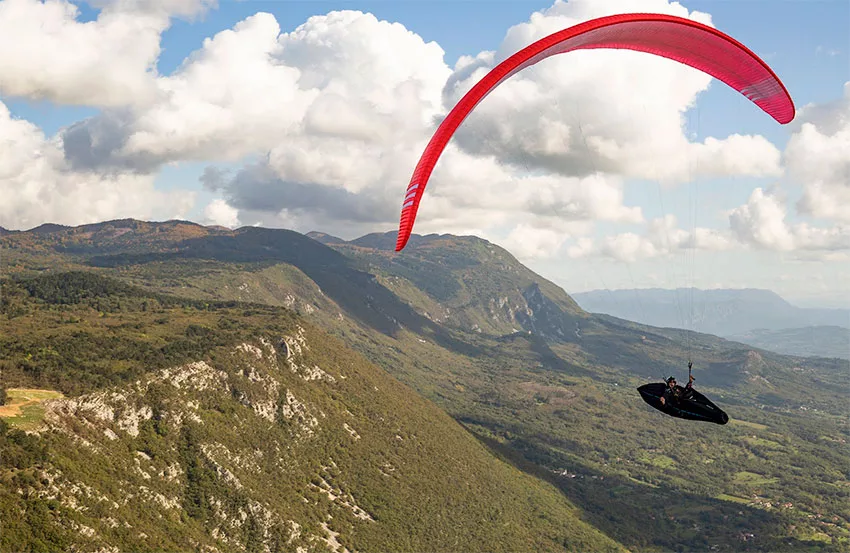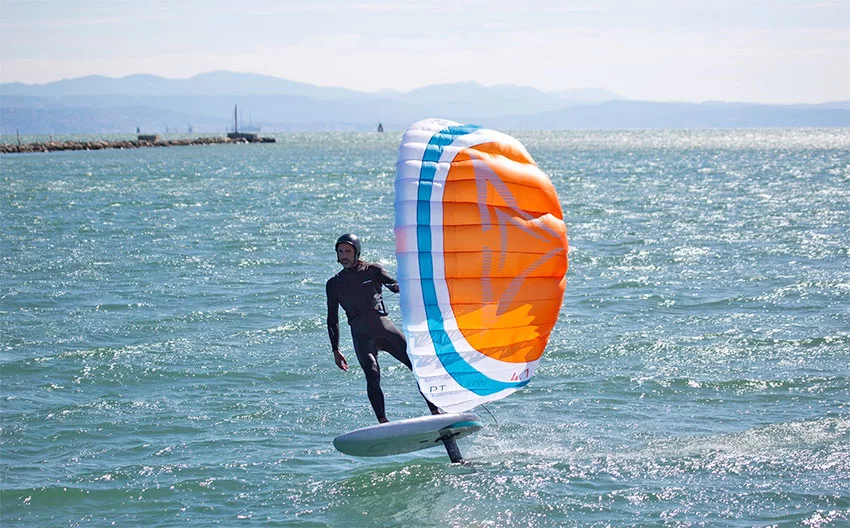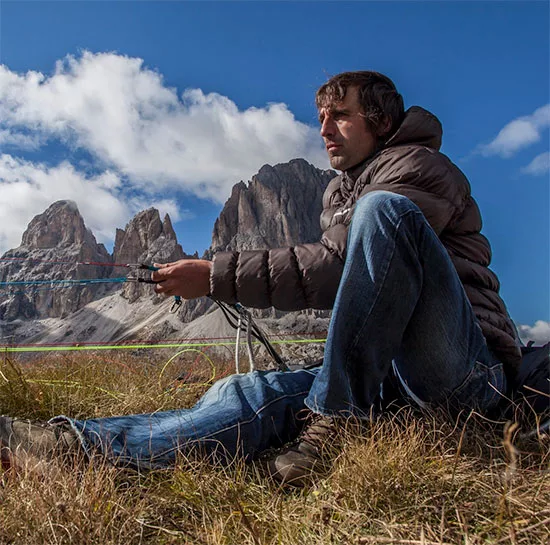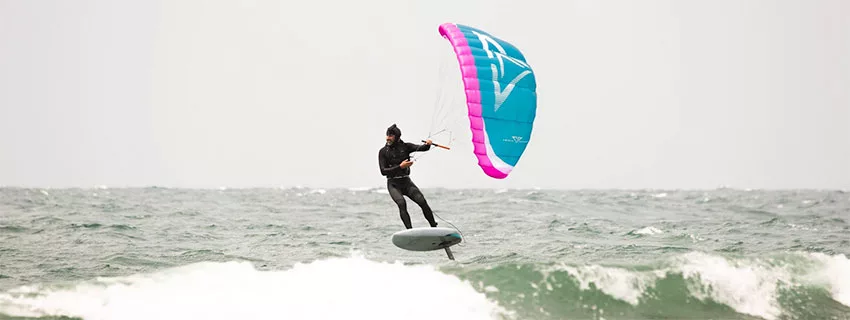Triple Seven Gliders – A Brand Built by Pilots, for Pilots

Triple Seven Gliders was founded by Aljaž and Urban Valic — two legendary competition paraglider pilots who made their mark on the international paragliding scene in the early 2000s. Known for their exceptional flying skills and podium finishes at major global events, the Valic brothers also developed a strong reputation as innovative wing designers.
Their passion for flight began with aeromodelling and aviation, evolving through years of testing and flying at the highest level. Before launching their own company, they contributed their expertise to major brands such as Niviuk, Gin, Mac Para, and Gradient, helping design some of the most successful paragliders of their time.
In 2011, driven by the desire to create gliders free from commercial compromise, they founded Triple Seven Gliders. Fast forward to 2025, and a new wind sport is on the rise — Parawinging. As the sport rapidly spreads across watersport hot spots around the globe, the Valic brothers are applying their decades of flight expertise to this new frontier.

We at Stand Up Magazin had the chance to test the Triple Seven PT Skin 3m Parawing and were genuinely impressed. Naturally, we wanted to learn more about their journey from the skies to the water — and sat down for an exclusive interview with Aljaž and Urban.
Aloha Aljaž, thank you for your time. I have to say, I was impressed with your product. As described in our intro, you have a rich history in paragliding. How did you get into watersports, and what ultimately made you decide to design and produce a Parawing?
Hi, and thank you for having us.

We got involved with kitesurfing back in the early ’90s, when my brother and I started experimenting with our own designs. We’re fortunate to live in a place where we can test our paragliders right behind our house on the mountain, and within just 45 minutes we can reach a reliable spot for wind-driven water sports.
Even before the local kite scene really took off, we were already flying our own kite designs, as successfully as one could in the early days of the sport. So, water sports have always been a big part of our story, long before Triple Seven Kites came to life, back then, simply as a hobby for ourselves. Things have changed quite a bit since then! 😊
The paragliding world and the watersports world are quite different — but Parawing brings both together. How did you find your way into the culture of Hawaiian watersports? Do you work with team riders or advisors — basically a group of people you rely on to understand this new market?
Right before the parawing sport even emerged, we had already taken a deep dive into kite foil designs and had them nearly ready. When wingfoiling appeared, we jumped on it as a hobby and were instantly thrilled to explore this new style of wave riding, even in the wind-driven swells of the Adriatic Sea. The sport unlocked many ideas, and we were already thinking about ways to have the wing stowed away at certain points. Our first brainstorming sessions were actually quite close to what we have today, just with a slightly different bar setup. Then we saw the early videos of the white parawings in Maui and immediately knew this sport would evolve into something big. Given our background in designing efficient wings, we quickly recognized areas where we could make improvements. Combined with our lifelong passion for water sports, this pushed us from the drawing board straight to the first prototypes. I personally designed and tested all of our products from start to finish. Now, as the sport continues to grow in our region, I’m fortunate to have skilled riders who help validate our ideas by testing prototypes — but overall, the development and testing still remain in my hands.
How do you view the watersports market and culture in comparison to the paragliding community?
There’s quite a difference between the two, which is natural given that paragliding has been around for decades, while parawing is still in its early stages. To start with paragliding, you have to go through an official school and licensing system, where you inevitably adopt the mindset and methods of your instructor and the established community. The parawing scene, on the other hand, is still very open and experimental. People are genuinely enthusiastic and eager to explore new ideas. That openness and excitement are what draw us to this sport as well.

Let’s talk about the product itself. How similar or different are paragliders and Parawings in terms of design and functionality?
Construction-wise, we can apply many of the same principles and lessons from the paragliding industry when building a parawing. Aerodynamically, though, the goals aren’t identical, so the airfoil and overall design need to be adapted for parawing’s specific demands. We don’t pump paragliders, and we don’t stow and redeploy them. Parawings must do all of that, so every element has to be engineered to work together without compromising another. For example, pushing for maximum efficiency and performance can produce a wing that’s too delicate or demanding for the average rider, and the opposite is also true. In both sports, success comes down to balance: the teams who best balance performance, durability, control, and usability will build the best products.
What steps did you take to transfer your paragliding knowledge into Parawing design?
Looking back, the process really happened quite organically rather than through any formal plan. As a designer, you naturally rely on your existing knowledge and personal approach to shaping a wing, and that guided us as we entered the parawing world. Having prior experience with kite foils and wings definitely helped, as it gave us a solid understanding of how the movements on the water translate to wing behavior. Thanks to that background, it was easier for us to adapt our designs and bring them to a finished stage without major setbacks during prototyping.
What was the design process like — from the first computer model to prototype and finally to production?
We use specialized software dedicated to designing our paragliding wings — and fortunately, we’ve been able to apply the very same tools to develop our range of parawings. Combined with our efficient workflow and close collaboration with our production facility in Sri Lanka, which we share with several other well-known brands in both paragliding and parawing, the process runs smoothly from the 3D model all the way to the first prototype. All the safety protocols and quality control measures we’ve established through years of designing paragliders are already in place, so transitioning into parawing development was a natural step for us rather than a major leap.
I noticed in the PT Skin there’s a string running inside the canopy, and you’re using far more battens than other companies. Does this come from paraglider technology? Do paragliders use battens as well?
Anyone with an eye for detail will quickly notice the P.T. Skin’s premium design. Every feature serves a specific purpose. From the vectral support you mentioned to the carefully stitched and reinforced rib edges, the custom drainage system with our own mesh, and much more — nothing is there by accident. We’ve concentrated over 20 years of design experience into creating parawings that deliver top-tier performance while remaining comfortable and forgiving in the hands of any rider. Even the plastic reinforcements are not just added — they’re strategically positioned and tuned in both size and stiffness throughout the canopy to ensure the wing retains its optimal shape in every flying condition.
You already have a double-skin Parawing, making you only the second brand to bring this to market. Can you explain in simple terms what the difference is between single-skin and double-skin wings? If I’m not mistaken, all paragliders are double-skin, correct?
To clarify, we were not the second brand but actually the first to introduce a double-skin parawing to the market. Our very first product, launched in January, was the P.T. double-surface parawing. At the time, however, the product was simply too advanced for the market, and many riders compared it to single-skin wings — a comparison that, as we now know, doesn’t make sense.

Gradually, as more riders dedicated time to learning how to handle double-surface wings, they began to appreciate the unique performance advantages they offer. Still, these wings remain in their own distinct segment within the parawing world. We strongly believe there’s plenty of room for further development in this category, and we plan to continue working on new models in the future.
In paragliding, we also distinguish between single- and double-surface wings. Single-surface designs have traditionally been used for the specific purpose of creating lighter wings for hike & fly activities with the understanding that they offer reduced performance compared to standard double-surface models. In fact, in paragliding, around 98% of wings are double-surface designs.
Parawings are still very new, and the industry is evolving fast. Many brands are experimenting with technology and responding to user feedback. Are you able to draw any parallels between the paraglider market and the watersports market? Do you see similar evolutionary cycles in Parawinging that mirror what happened in paragliding?
Indeed, parawing technology is evolving incredibly fast right now — largely thanks to the vast amount of knowledge we can draw from other sports such as paragliding. When paragliding first began, we didn’t have access to the advanced materials and design tools available today, which made progress much slower. In contrast, the parawing industry benefits from decades of accumulated aerodynamic experience and cutting-edge materials, allowing for a much steeper and faster development curve.
Where do you see Parawing and the sport as a whole heading in the next 2–5 years?
I believe we’ll see a growing number of riders joining the sport — once someone experiences the freedom of riding a wave without a big wing in hand, they’re bound to become a parawinger for life. 😊 From a design perspective, everything is moving toward lighter construction, as weight is one of the key factors in parawing performance. We’re already using some of the finest and lightest materials available, and we believe many others will follow this path in the near future.
Thank you very much for your time. It was fascinating to talk to you and get insights into how paragliding expertise is shaping the future of Parawing.
Thank you very much for giving us the opportunity to share our story.
Kind regards
